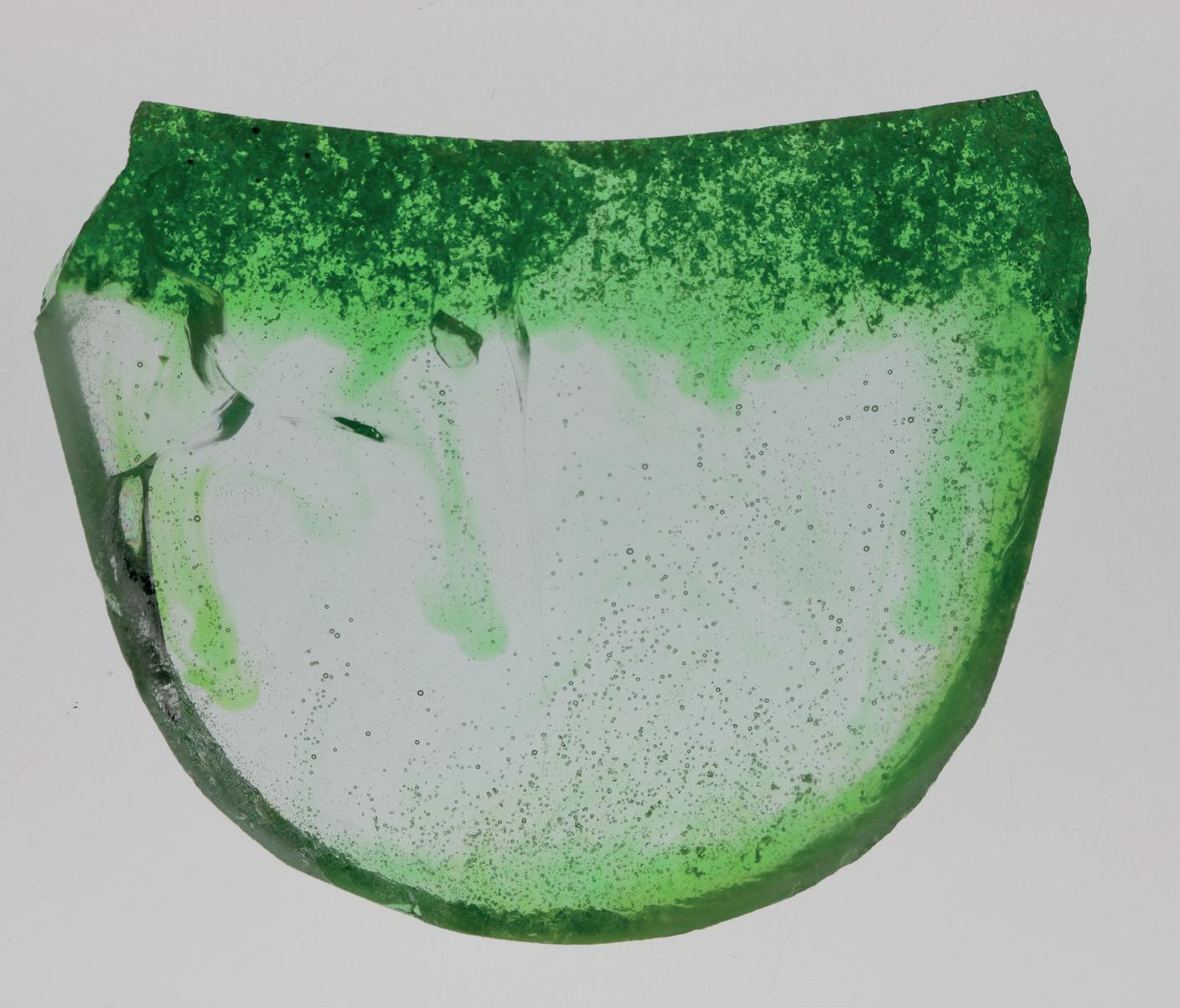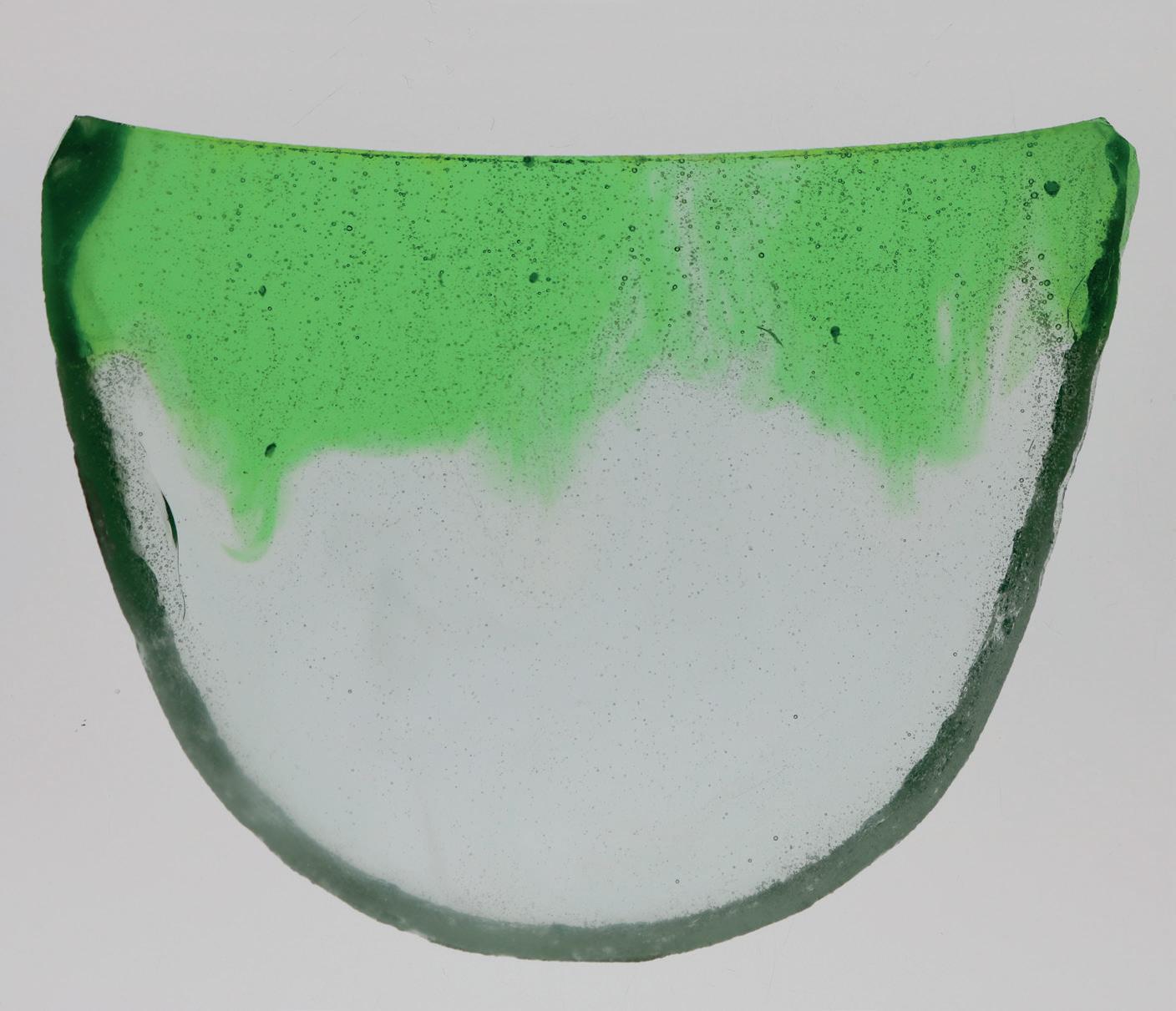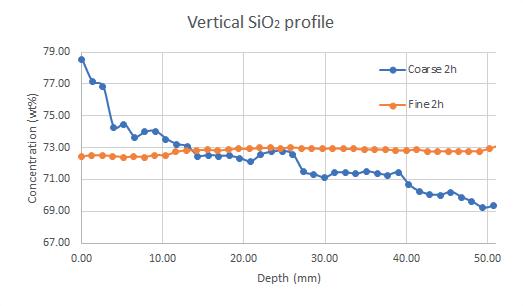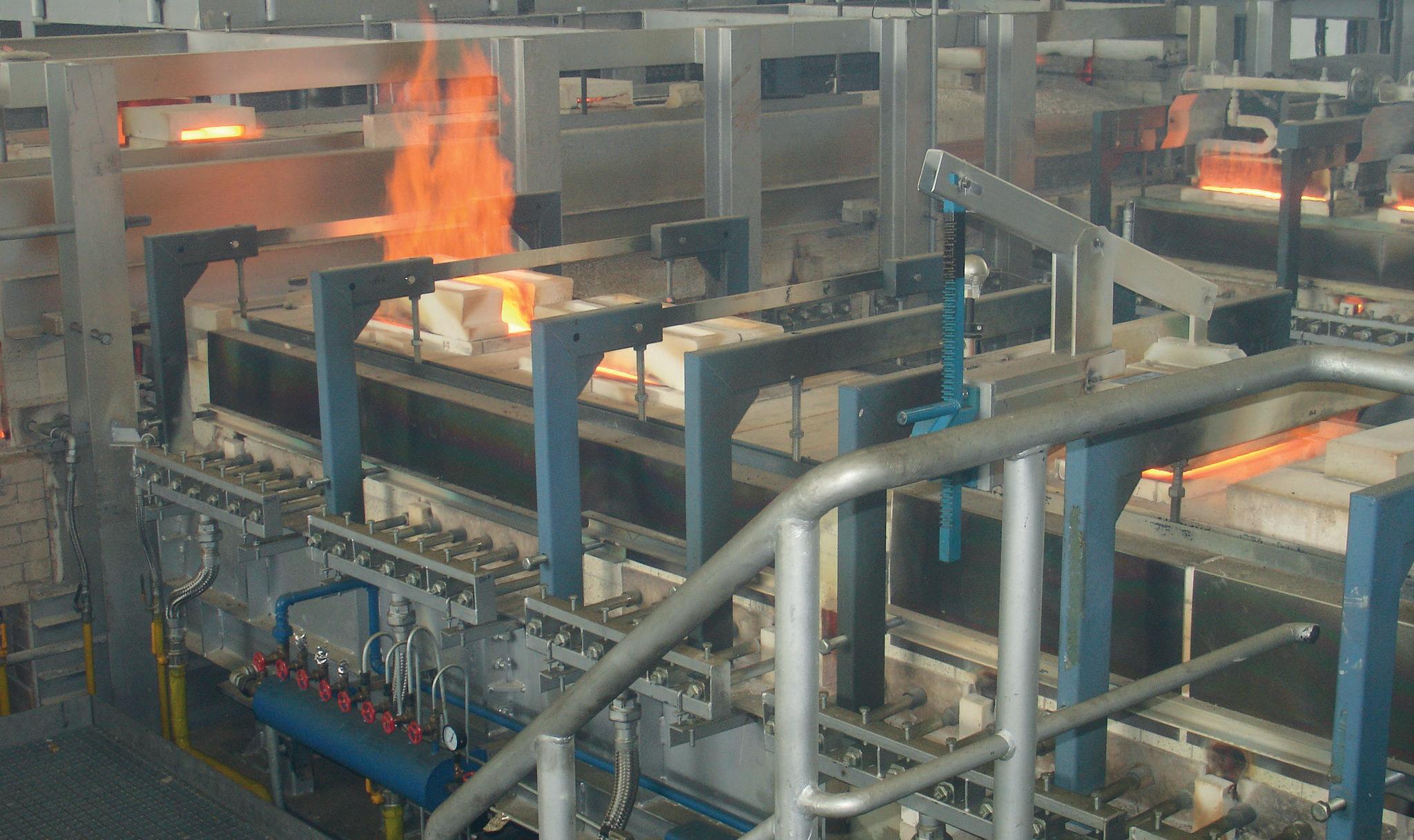
6 minute read
Raw materials: Sibelco
Mineral solutions for greener glass production
Sibelco is exploring the use of different materials within the glass batch to help improve melting efficiency and reduce the overall carbon footprint of the glass manufacturing process. Lesley Beyers* explains.
As one of the world’s largest providers of industrial minerals and other materials, Sibelco has set a target to reduce Scope 1 and 2 emissions intensity (tonnes CO2 / revenue) by 5% per year from 2021 to 2030 – cumulatively a reduction of 37%, assuming the same scope of activities.
But it is Sibelco’s Scope 3 emissions that account for by far the biggest percentage of the company’s carbon footprint. That is why Sibelco is working to help its customers reduce emissions in line with best practices promoted by the Science Based Targets initiative (SBTi). And as Sibelco’s second largest market, glass is a key area of research and development.
Key focus areas
Sibelco is exploring four categories of material to reduce the overall carbon footprint of the glass manufacturing process:
� materials with a lower inherent carbon footprint � materials to reduce CO2 emissions � materials for low-CO2 technologies � materials to reduce energy demand
With regard to the first category, the use of cullet is an obvious solution – every 1,000 tonnes of cullet used during the glass manufacturing process saves approximately 314 tonnes of CO2. Sibelco is already Europe’s largest glass recycler, each year transforming over 3 million tonnes of waste glass into cullet.1
There are clear synergies between the remaining three categories - for energy-intensive combustion processes, materials that can even slightly reduce energy demand can have a long-term impact on CO2 emissions.
� Pic 1. Vertical section of pre-melted float glass cullet (3 hours at 1350°C) with addition of standard float glass batch at 1350°C for two hours.
Batch materials substitution
Redesigning the batch mixture by substituting one mineral for another can improve the energy efficiency of the glassmelting process. In fibreglass production for example, anorthosite can replace kaolin and some burned lime.
Due to its chemical make-up (specifically the absence of crystalline water) less energy is required to melt anorthosite. Furthermore, the partial substitution of burned lime decreases the indirect energy costs and CO2 emissions associated with its production.
Such batch substitutions to address emissions targets reflect the philosophy of Prokhorenko: “Improvement of conventional glass melting processes without major changes in existing technology”.2
Tailored batch materials for melt homogenisation
Lowering the energy input from the combustion space or increasing the furnace pull leads to a risk of deteriorating glass quality. Traditionally this risk has been mitigated by the introduction of electric boosting (efficient energy input) and bubblers (forced convection). A universal approach to mitigate the same risk without requiring furnace modification is the optimisation of the glass batch to improve the quality of the

� Pic 2. Vertical section of pre-melted float glass cullet (3 hours at 1350°C) with addition of modified float glass batch at 1350°C for 2 hours
Improving conventional glass melting processes
Material solutions investigated by Sibelco offer the potential to reduce the carbon footprint of the glass-melting process, cutting energy consumption and CO2 emissions.
The envisaged modifications and substitutions create suitable conditions within the glass furnace to increase yield (by decreasing defects), increase pull rate, and lower melting temperatures.
A further focus on primary melt quality may enable a decrease in the required residence time of the glass in the furnace; this could see further reductions in overall energy consumption and CO2 emissions by reducing time needed to homogenise the glass. �
primary glass melt.3
A method employed at Sibelco’s glass laboratory to test the melting behaviour of 500-600g glass batches reveals important aspects of primary melt quality and batch segregation. One procedure involves the melting of 300g of float glass cullet for three hours at 1350°C and the subsequent addition of 300g of float glass batch (with chromium indicator) on top of the molten glass.
A batch-free time study in this setup permits an evaluation of the impact of raw material characteristics on the batch melting behaviour.
The standard float glass batch (Pic 1) is seen to form a primary melt phase that is enriched in calcium and magnesium. This primary melt phase has a higher density and segregates from the rest of the melting batch materials. The remnant batch materials on top of the molten glass are rich in silica and will dissolve at a slower pace due to the decrease of fluxing compounds. In the case of the modified float batch (Pic 2), the segregation during melting is avoided and a more homogeneous primary melt phase is obtained.
An in-depth evaluation of glass via Scanning Electron Microscope (SEM-EDX) reveals the extent of batch segregation. A top-down composition measurement along the central axis of a glass sample (Fig 1) illustrates a steep concentration gradient for silica in the case of a standard float glass batch, and the absence of segregation and silica-enrichment in the case of modified batch materials.
These comparative samples were produced by melting 500g batches at 1350°C for two hours.
This focus on the primary melt phase is a more ambitious approach to lower the energy requirements of the glass-melting process.
Glass quality improvements can be achieved by modifying the physical form of the raw materials through mechanical, chemical or thermal processing.
A high initial glass quality would reduce the need for extensive mixing and homogenisation of the glass melt.
*Glass Scientist, Sibelco Technology & Innovation, Dessel, Belgium www.sibelco.com
References:
1. S. Hourquebie and H. van Limpt, “Sibelco Glass Recycling,” GMIC/ GlassTrend Virtual Recycling Seminar, 16th June 2022. 2. O. A. Prokhorenko, “Energy-Saving Glassmelting,” American Ceramic Society Bulletin, vol. 85, no. 10, pp. 29-34, 2006. 3. S. Hourquebie and H. van Limpt, “Short-Term Solutions to Keep the Melting Costs Under Control” GlassTrend Seminar on Glass Recycling & Mineral Solutions, 29th November 2022.


Reduction of energy consumption in working ends and forehearths
Jürgen Grössler* considers several options to reduce the energy consumption of existing or new glass conditioning systems that will also reduce CO2 output.

� Fig 1. Poor air/gas mixture setting: flames burst out of the chimney.
Today, modern forehearths are no longer the ‘energy destroyers’ of the 1970s or 1980s. Many forehearths were widely used as K-type forehearths until the mid-1980s. Emhart introduced this so-called gas-fired forehearth in the mid-1940s and it established itself as the standard forehearth globally!
The first forehearth types that came on the market in the mid-1980s, along with high-pressure heating, improved refractory superstructure design effectively reduced energy consumption by 50% compared to their predecessors.
Such savings are no longer achievable today with gas-heated forehearths. Nevertheless, it makes sense to look for further savings potential. A simple way to save energy on existing installations is to optimise the installation settings regularly and carry out regular maintenance. Experience from audits conducted by Sorg shows that more than half of the audited forehearths or working ends were not optimally adjusted (Fig 1).
The air and gas ratio per heating zone is a crucial factor. Theoretical calculations show that even a deviation of 0.1% or 0.2% in the mixture can lead to an additional gas consumption of up to 10%! The proven Sorg VMC system keeps mixtures stable to +/- 0.1%.
This stability can be further stabilised and improved by installing Sorg’s patented OMT trim system. The OMT system adjusts the air-gas ratio automatically or makes it stable via a permanent O2 measurement per heating zone. This means that the air-gas balance remains stable (Fig 2).
Often ignored but not to be neglected is the spout heating of a forehearth, as it is an energy consumer that should not be underestimated. In the case of normal soda-lime glasses, it is not necessary to heat the spout too much.
Mixture pressures above 20 mbar and up to 40 mbar, which Sorg has seen during audits, are rarely necessary.
In principle, a mixture pressure between 10 to 15 mbar is sufficient.










